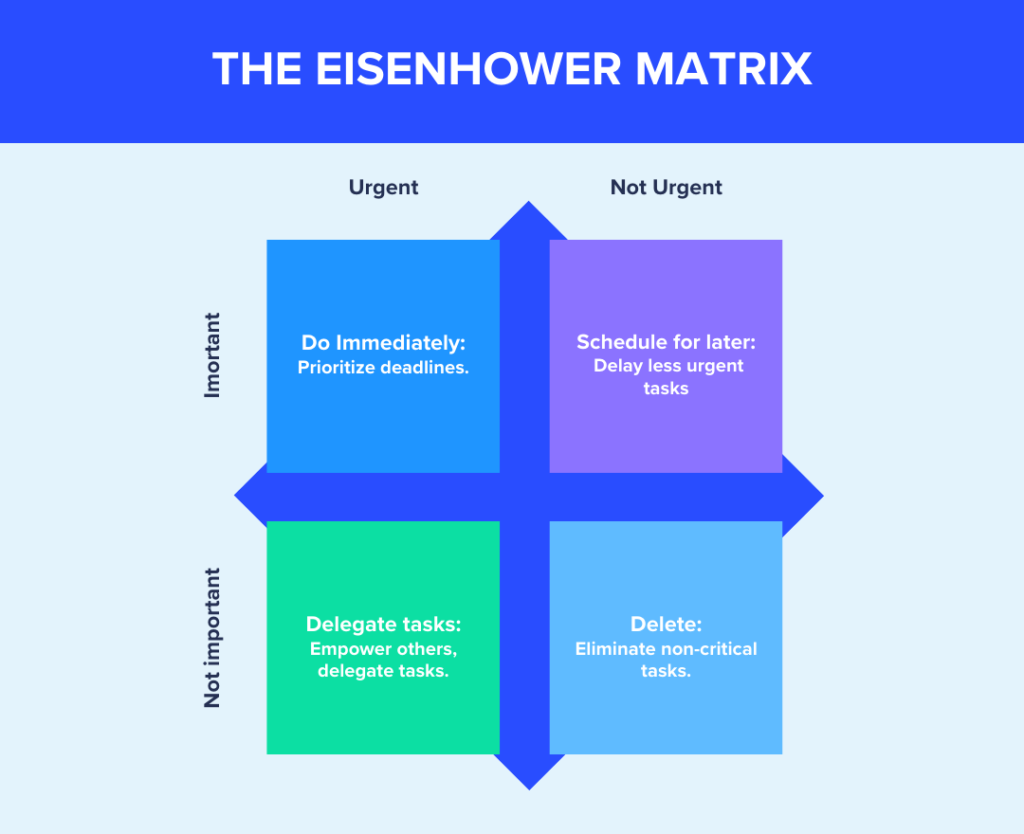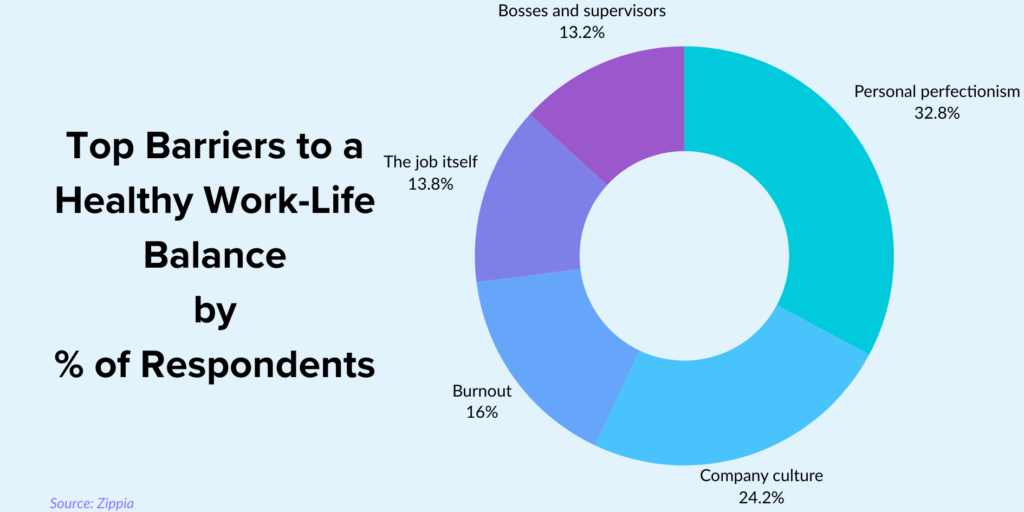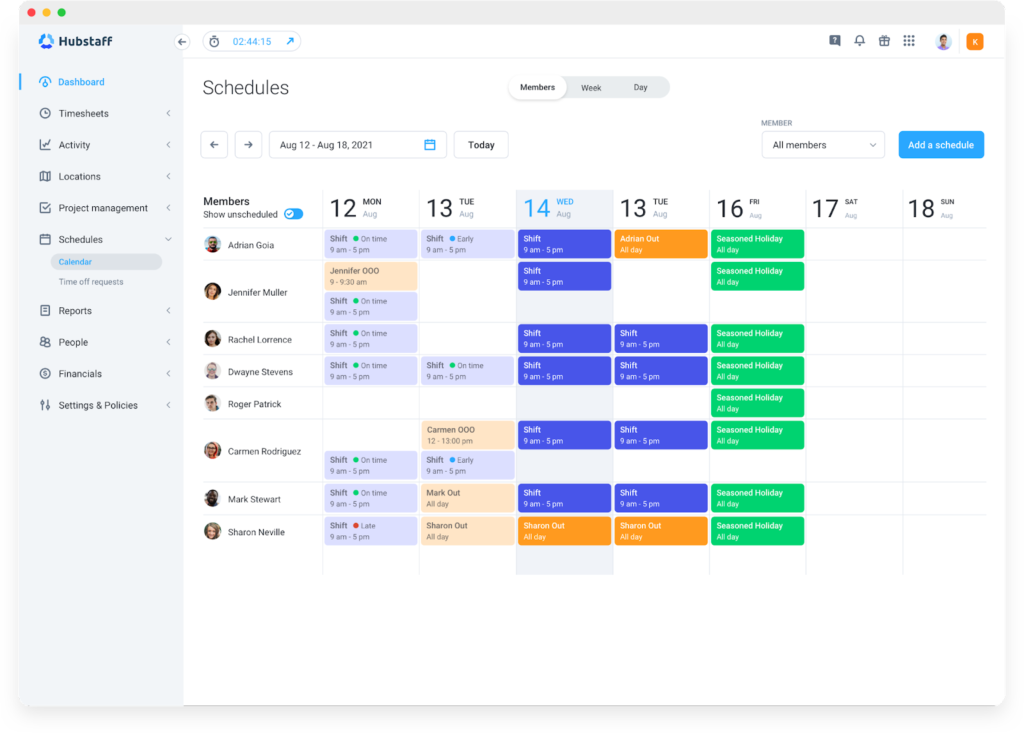Overtime refers to the extra hours employees work beyond the standard workweek, typically compensated at a higher pay rate. Oftentimes, employees perform overtime work to meet tight deadlines or deal with urgent, unexpected situations. Learn more about overtime laws.
While often seen as a necessary evil, overtime can affect an employee’s well-being. Research from the National Library of Medicine shows that overtime hours can lead to health conditions like hypertension and cardiovascular diseases.
This is why, despite the perceived benefits of overtime, companies must learn how to reduce it to cut costs, increase efficiency, and protect employee well-being.
To address overtime, companies must adopt an action plan to balance workloads and prevent the need for excessive extra hours in the first place.
- 1. Use a time tracking solution
- 2. Analyze overtime data
- 3. Use communication channels properly
- 4. Cross-train employees
- 5. Set clear expectations
- 6. Improve processes
- 7. Monitor workloads
- 8. Improve processes for approving overtime
- 9. Promote time management
- 10. Prioritize tasks
- 11. Promote a healthy work-life balance
- 12. Cap overtime
- 13. Match staffing to demand
- 14. Establish an official overtime policy
- 15. Use employee scheduling software
- 16. Equip your team with the right equipment and resources
- Conclusion
Boost your team’s efficiency with Hubstaff's productivity tools
1. Use a time tracking solution
Time tracking tools provide valuable insights into how teams spend time on various tasks and projects. This allows managers to identify inefficiencies and optimize workflows.
Companies can better distribute workloads and mitigate overtime by having a clear view of time allocation. Here are some of the best time tracking tools.
Hubstaff

Hubstaff is a comprehensive time tracking solution that offers detailed reports, productivity tools, and automated payroll and invoicing solutions. You can see which work classifications take up most of your team’s time, letting you plan tasks and allocate resources more effectively. In scenarios where overtime work is absolutely necessary, Hubstaff also has an overtime tracking feature that allows you to set overtime pay rates for team members.
Other time tracking solutions
- RescueTime. RescueTime provides reports on time spent on applications and websites, helping managers understand their team’s work habits. With features like goal setting and distraction blocking, RescueTime helps employees stay focused to finish tasks on time.
- Toggl. Known for its user-friendly interface and simplicity, Toggl is a favorite among freelancers and small teams. It helps users understand how their time is spent, identify areas for improvement, and ultimately avoid overtime hours.
Time tracking tools can reveal trends contributing to overtime, allowing managers to make informed decisions to improve productivity.
2. Analyze overtime data
Once you’ve collected data with time tracking tools, the next step is to analyze it. By examining the data, managers can identify factors that may be contributing to unnecessary overtime hours.
For example, certain projects or times of the year might consistently require more overtime, indicating potential areas for improvement in workload distribution.
Tracking overtime data helps managers understand which tasks or employees frequently work beyond their scheduled hours.
Some tools help you determine utilization rates and balance meeting and focus time to anticipate issues before you rack up overtime costs. This information can also reveal underlying issues like process inefficiencies, bottlenecks, or unrealistic deadlines.
Regular analysis of overtime data also allows managers to monitor the effectiveness of any changes made. If a particular adjustment leads to a significant decrease in overtime, the strategy is working. Conversely, further adjustments may be necessary if overtime remains high after the changes.
3. Use communication channels properly
Clear and timely communication helps prevent misunderstandings, often leading to project delays and extended work hours.
The key to improving communication is establishing the most appropriate channels for different types of information.
- Instant messaging. For quick questions, updates, and real-time collaboration. Use platforms like Slack or Microsoft Teams to keep conversations focused and avoid cluttering email inboxes.
- Email. For formal or external communications, detailed explanations, and non-urgent matters. Avoid using email for tasks that need immediate attention or require a quick response.
- Video conferencing. For in-depth discussions, team meetings, and brainstorming sessions. Ensure meetings have a clear agenda to keep them concise and productive.
A well-crafted communication manifesto is an invaluable tool in this process. A communication manifesto ensures that all team members understand the preferred methods of interaction and the standards for effective communication. You can try the Hubstaff Communication Manifesto below:
Get our free Communication Manifesto
4. Cross-train employees
Cross-training employees helps create a more versatile and adaptable workforce, which can contribute to reduced overtime costs.
When employees are skilled in multiple roles, they can step in to cover for absent teammates or assist during peak times. This flexibility also helps balance workloads more evenly across teams.
Cross-training enhances your employees’ understanding of different aspects of the business, helping build a more cohesive work environment. It also promotes continuous learning and professional development, boosting employee morale.
5. Set clear expectations
You can’t reduce overtime if your employees don’t fully understand their roles and responsibilities. As a leader, you should take full responsibility for this.
When tasks and deadlines are communicated effectively, employees can plan their work better and avoid last-minute cramming. Clear expectations help prevent misunderstandings and keep everyone aligned with the organization’s goals.
Managers should provide detailed guidelines and help employees focus on tasks that move the needle. Regular feedback and performance reviews also help clarify and reiterate expectations.
6. Improve processes
Companies can eliminate unnecessary steps by regularly refining workflows and identify more efficient ways to work. This then helps reduce the time required to complete projects, decreasing your team’s reliance on overtime.
- Automate repetitive tasks. Use technology to automate routine tasks, freeing up employees’ time for more critical work. For instance, you can use a tool like Hubstaff to track time and monitor productivity instead of asking employees to fill out paper time cards. You can also see real-time insights and pull reports instead of sending manual ones via email.
- Adopt Agile methodologies. Implement Agile practices to improve flexibility and responsiveness in project management.
- Standardize procedures. Develop clear, standardized procedures for common tasks to ensure consistency, reduce errors, and save on training costs.
- Regular process audits. Conduct regular audits to identify bottlenecks and areas for improvement, keeping processes efficient and up-to-date.
Encouraging continuous improvement and collecting employee feedback can also help you uncover insights into potential inefficiencies. This proactive approach also helps employees maintain a healthy work-life balance, too.
7. Monitor workloads
Assigning tasks efficiently is hard when you don’t know how they’re distributed.
By monitoring workloads, managers can identify over-encumbered employees and those who may have room on their plate. It also provides an opportunity to identify any recurring issues that may be causing unnecessary stress.
Additionally, open communication about workload expectations and task progress can support employees in mastering efficient time management.
8. Improve processes for approving overtime
Establishing clear criteria and guidelines for when overtime is allowed ensures that it’s used judiciously and only when absolutely necessary. Working overtime is already difficult enough, so there’s no reason for the approval process to be complex, either.
When managers review overtime requests, they should take employee workload and the potential impact on well-being into account. Regularly analyzing overtime requests can also reveal patterns and potential process adjustments to avoid future overtime.
The main goal behind improving overtime approval processes isn’t to make it easier to work overtime the next time. Instead, it’s to reduce the mental stress employees have to deal with so they can perform better.
9. Promote time management
Effective time management significantly impacts employee schedules, making it easier to handle workloads, especially during busy periods. Key time management techniques include:
- Pomodoro technique. Involves working in focused intervals of 25 minutes followed by a short break. This method helps maintain high levels of concentration and prevents employee burnout, making it easier to stay productive throughout the day.
- Time blocking. Encourage employees to allocate specific time slots for different tasks throughout their day. Time blocking helps create a structured schedule, reducing the likelihood of work spilling over into overtime.

- Eisenhower Matrix. In this method, employees prioritize tasks based on urgency and importance. It helps focus on high-impact activities first, ensuring critical tasks are completed within regular work hours.
- Task batching. Group similar tasks together to be completed in one time block. This reduces the mental switch between different types of work and improves efficiency.
10. Prioritize tasks
Effective prioritization is a must-have in every manager’s arsenal. With task prioritization skills, they can ensure that the most critical work is completed first, which then helps in managing employee scheduling more effectively.
This method involves assessing the urgency and importance of each task and organizing them accordingly. Task prioritization supports flexible work schedules by allowing employees to tackle the most important tasks during peak productivity.
As a result, employees can more easily enter flow states during regular working hours, stopping overtime work before it happens.
11. Promote a healthy work-life balance

Too much overtime reduces job satisfaction and, more importantly, employee fatigue. Accurate KPIs and well-written job descriptions don’t drive a company’s success—it’s intangible factors like work-life balance and people-first cultures.
For starters, offering flexible schedules may seem like a small thing, but it gives your team members more control over their time. It also shows them you trust them to be responsible with their autonomy.
Creating a supportive work environment helps prevent the negative impacts of excessive overtime on employee health. When employees feel that their work-life balance is respected, they are more likely to be engaged and productive during regular working hours.
12. Cap overtime
Capping overtime is a brute-force, albeit effective, way to reduce employee overtime.
Setting a limit on the number of overtime hours that employees can work within a given period can help employees discover creative ways to manage their workloads. Plus, it has the added benefit of reducing overtime costs.
Implementing a cap on overtime requires clear policies and guidance. Managers should regularly monitor employee overtime hours to ensure compliance. This can involve moving tasks around or providing additional resources to meet deadlines without resorting to overtime.
13. Match staffing to demand
When demand outweighs labor, employees are often forced to work extra hours, leading to increased labor costs and burnout. Companies must analyze workforce behaviors and forecast demand to ensure they have the right number of employees available to meet their needs.
Staffing adjustments can consider hiring temporary or part-time workers during peak periods to alleviate the pressure on full-time staff. This helps keep productivity at healthy levels while keeping labor costs under control.
Make sure to regularly review and adjust staffing plans based on real-time data and feedback. It’s also important to consider labor laws when scheduling staff to ensure compliance and avoid any legal issues related to overtime.
14. Establish an official overtime policy
Admittedly, it is a bit odd that people take things more seriously when the word “official” is attached to them — but it works. The same applies to something as serious as overtime policies.
An official overtime policy helps ensure controlled overtime hours and fair treatment of employees. This policy should clearly outline the rules and procedures related to overtime to avoid any confusion and to maintain consistency across the organization.
Key questions to address in the policy include:
- What counts as overtime work? Define when overtime begins, and specify the hours considered beyond the regular work schedule.
- How are overtime hours requested? Employees should have a clear process for requesting to work overtime hours. Clarify if they need necessary approvals from supervisors or if they need to file requests through an app like Hubstaff.
- How are employees compensated for overtime? Explain how you will pay employees for overtime, including pay rates and additional benefits.
- Who is eligible to work overtime? Specify which employees or roles are eligible to work overtime hours and any restrictions that may apply.
- What is the maximum amount of overtime allowed? Establish limits on the number of overtime hours employees can work within a certain period.
15. Use employee scheduling software

In many cases, overtime happens because there’s a lack of work structure. Employee scheduling software provides a much-needed solution to that.
Employee scheduling tools are designed to help teams handle varying workforce demands. Hubstaff, for example, provides real-time insights into staffing levels and potential scheduling conflicts, making it easier to adjust schedules proactively.
Scheduling tools also enable managers to implement flexible work schedules with their features for transparency and accountability.
16. Equip your team with the right equipment and resources
When employees have the tools they need to perform their tasks efficiently, delays are less likely to occur. Proper equipment and resources ensure tasks are completed within regular employee hours, helping companies avoid paying overtime.
Investing in up-to-date technology and providing proper training can significantly enhance productivity. This also helps prevent disruptions caused by the unavailability of important resources.
That said, there is such a thing as too many tools. Even if your intention was to make things easier for employees by providing a tool for each task, it doesn’t work out like that in practice. In this scenario, less is more. We’re willing to bet you don’t want to lose track of tasks because you have three separate project management platforms.
Conclusion
It’s time to treat overtime for what it really is: a last resort, not a culture. Despite how it has been painted for decades, it shouldn’t be a badge of honor. Instead, it’s a sign that there are workforce and workload issues that need to be addressed.
This shift in perspective encourages proactive solutions and continuous improvement, ultimately leading to a healthier, more engaged, and more productive workforce. By viewing overtime as an exception rather than the rule, companies can create a work environment where every person can thrive.
Most popular
The Fundamentals of Employee Goal Setting
Employee goal setting is crucial for reaching broader business goals, but a lot of us struggle to know where to start. American...
Data-Driven Productivity with Hubstaff Insights: Webinar Recap
In our recent webinar, the product team provided a deep overview of the Hubstaff Insights add-on, a powerful productivity measurem...
The Critical Role of Employee Monitoring and Workplace Security
Why do we need employee monitoring and workplace security? Companies had to adapt fast when the world shifted to remote work...
15 Ways to Use AI in the Workforce
Whether through AI-powered project management, strategic planning, or simply automating simple admin work, we’ve seen a dramatic...




